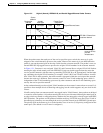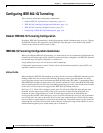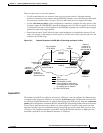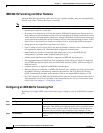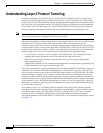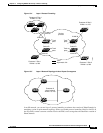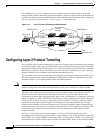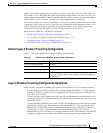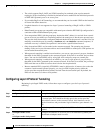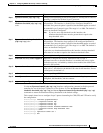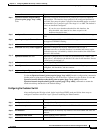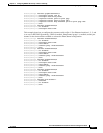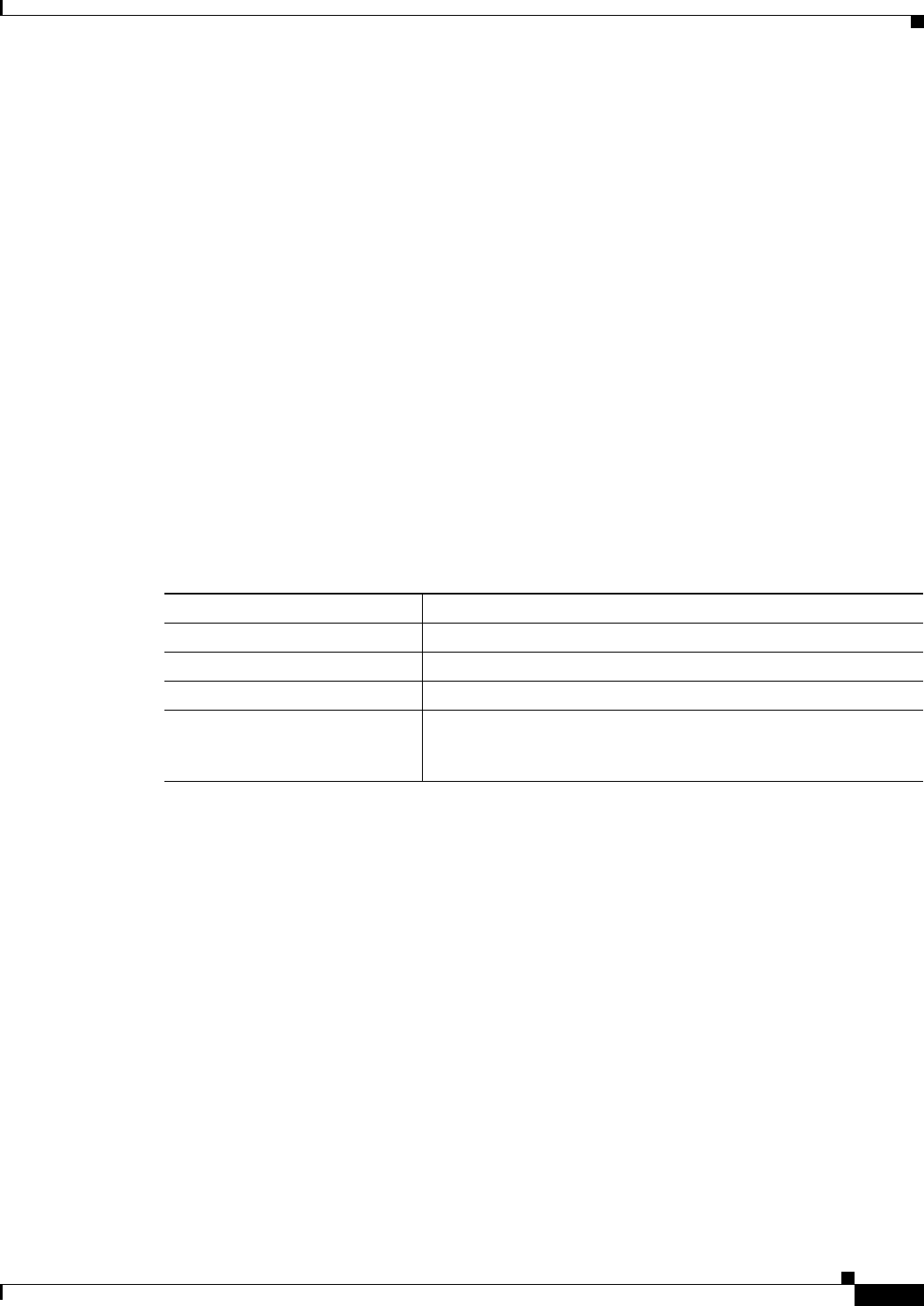
13-11
Cisco ME 3400 Ethernet Access Switch Software Configuration Guide
78-17058-01
Chapter 13 Configuring IEEE 802.1Q and Layer 2 Protocol Tunneling
Configuring Layer 2 Protocol Tunneling
address. These double-tagged packets have the metro VLAN tag of 40, as well as an inner VLAN tag
(for example, VLAN 100). When the double-tagged packets enter Switch D, the outer VLAN tag 40 is
removed, the well-known MAC address is replaced with the respective Layer 2 protocol MAC address,
and the packet is sent to Customer Y on Site 2 as a single-tagged frame in VLAN 100.
You can also enable Layer 2 protocol tunneling on access ports on the edge switch connected to access
or trunk ports on the customer switch. In this case, the encapsulation and decapsulation process is the
same as described in the previous paragraph, except that the packets are not double-tagged in the
service-provider network. The single tag is the customer-specific access VLAN tag.
These sections contain this configuration information:
• Default Layer 2 Protocol Tunneling Configuration, page 13-11
• Layer 2 Protocol Tunneling Configuration Guidelines, page 13-11
• Configuring Layer 2 Protocol Tunneling, page 13-12
• Configuring Layer 2 Tunneling for EtherChannels, page 13-14
Default Layer 2 Protocol Tunneling Configuration
Table 13-1 shows the default Layer 2 protocol tunneling configuration.
Layer 2 Protocol Tunneling Configuration Guidelines
These are some configuration guidelines and operating characteristics of Layer 2 protocol tunneling:
• The switch supports tunneling of CDP, STP, including multiple STP (MSTP), and VTP. Protocol
tunneling is disabled by default but can be enabled for the individual protocols on IEEE 802.1Q
tunnel ports or access ports.
• The edge switches on the outbound side of the service-provider network restore the proper Layer 2
protocol and MAC address information and forward the packets to all tunnel and access ports in the
same metro VLAN.
• For interoperability with third-party vendor switches, the switch supports a Layer 2 protocol-tunnel
bypass feature. Bypass mode transparently forwards control PDUs to vendor switches that have
different ways of controlling protocol tunneling.When Layer 2 protocol tunneling is enabled on
ingress ports on a switch, egress trunk ports forward the tunneled packets with a special
encapsulation. If you also enable Layer 2 protocol tunneling on the egress trunk port, this behavior
is bypassed, and the switch forwards control PDUs without any processing or modification.
Table 13-1 Default Layer 2 Ethernet Interface VLAN Configuration
Feature Default Setting
Layer 2 protocol tunneling Disabled.
Shutdown threshold None set.
Drop threshold None set.
CoS value If a CoS value is configured on the interface for data packets, that
value is the default used for Layer 2 PDUs. If none is configured,
the default is 5.



